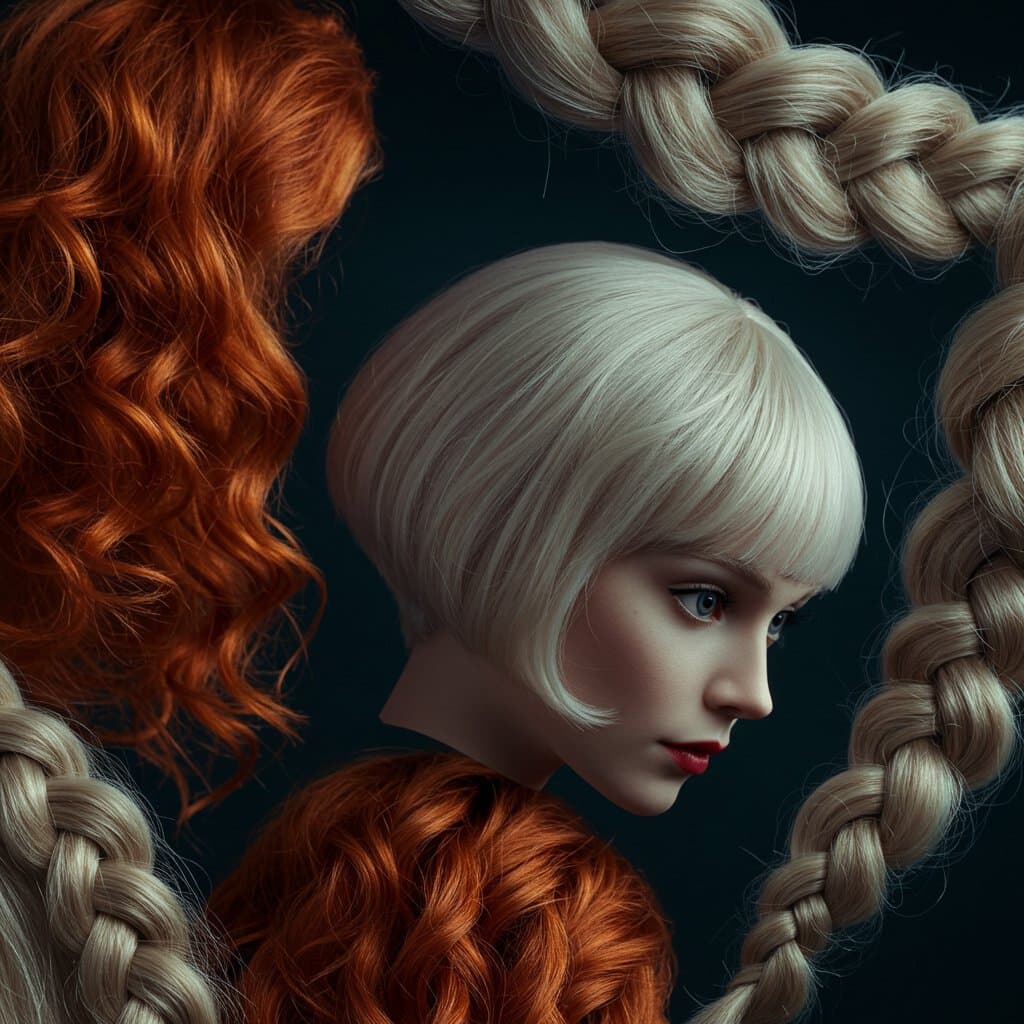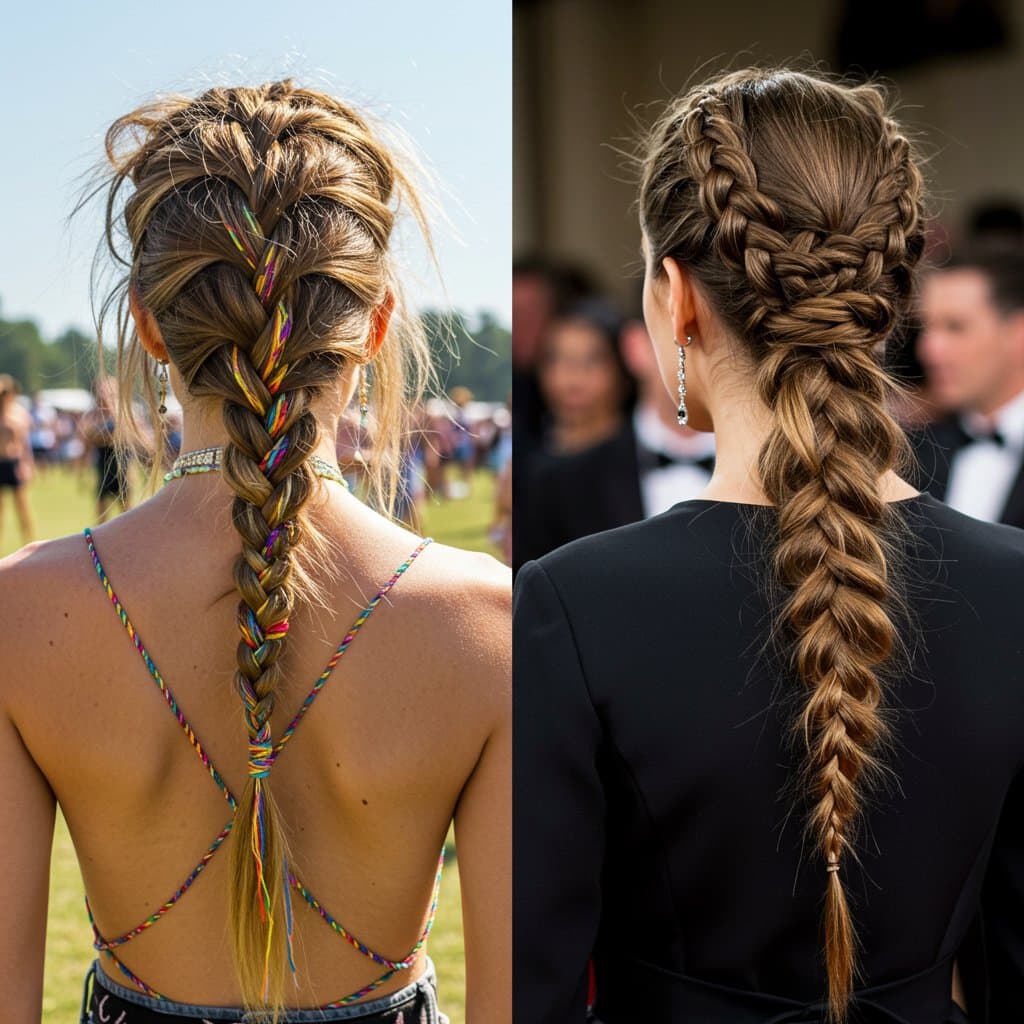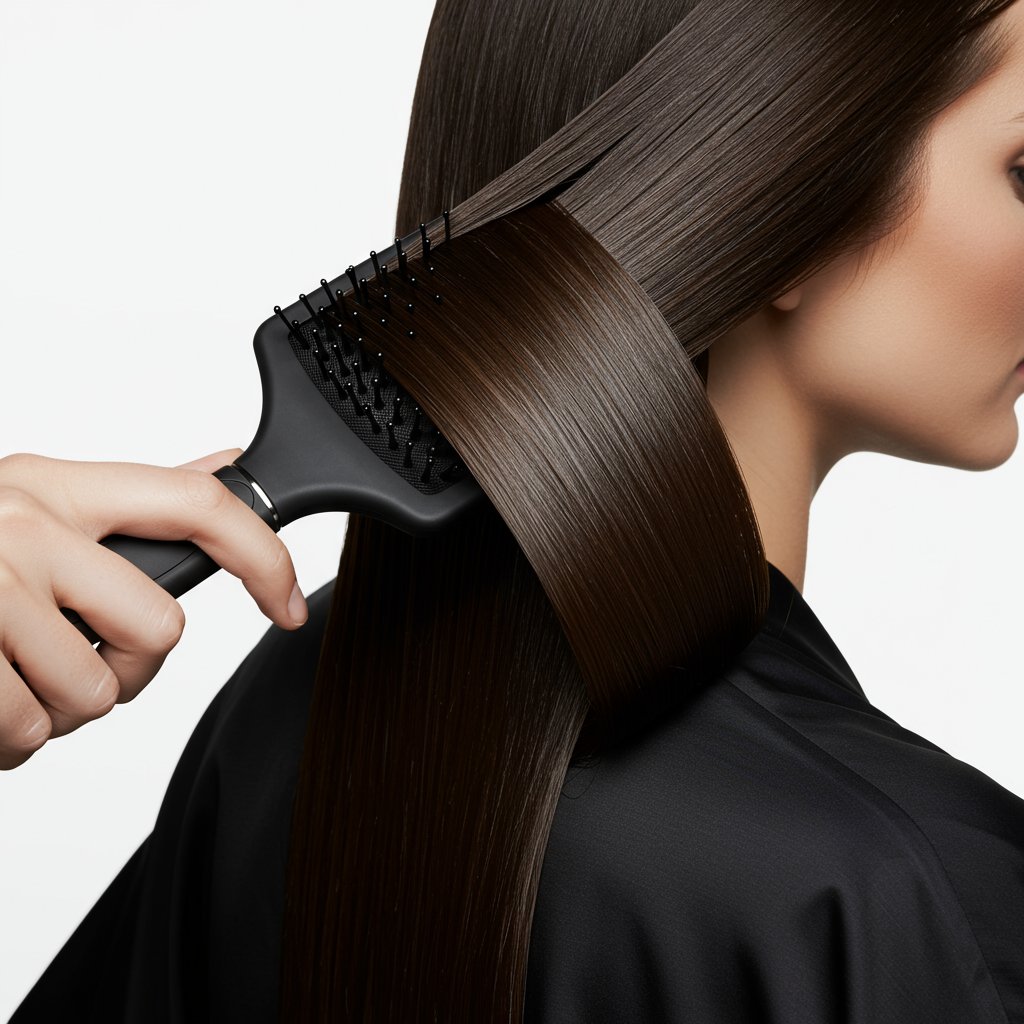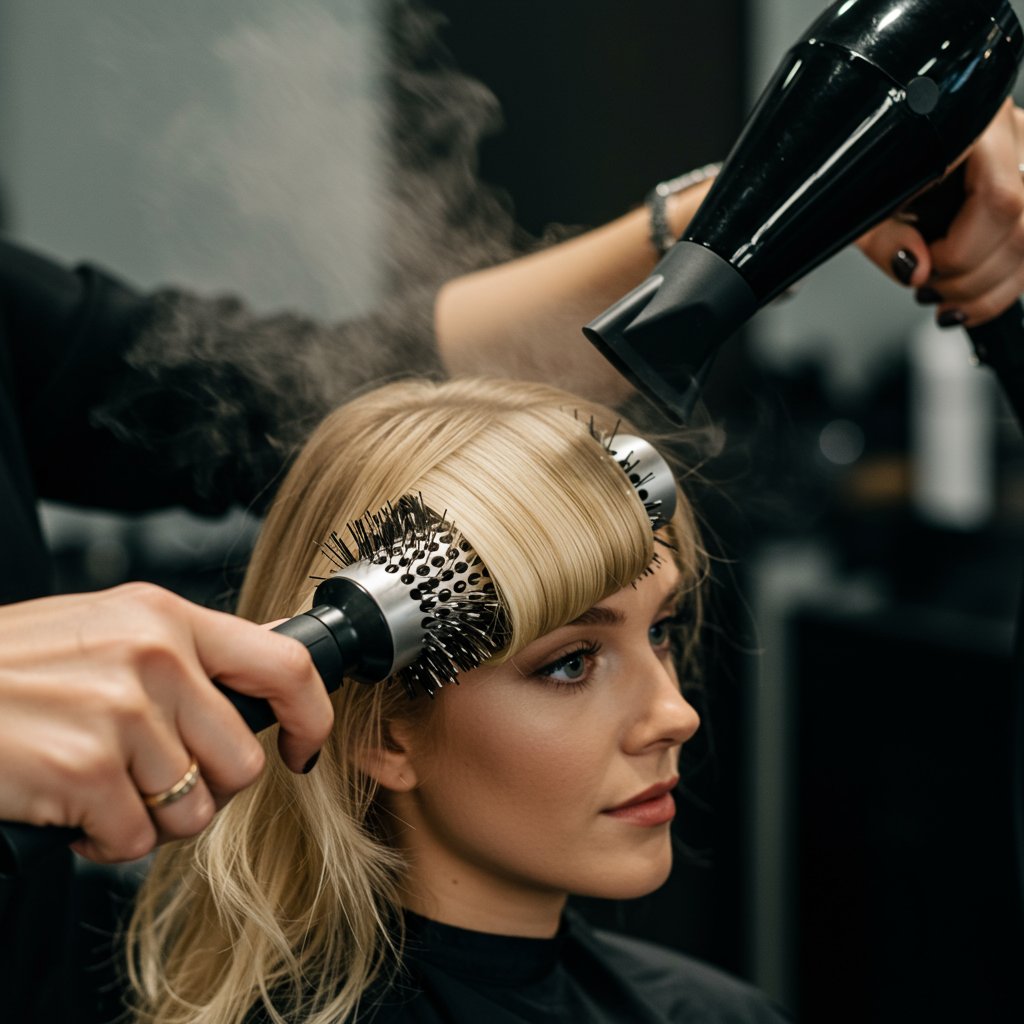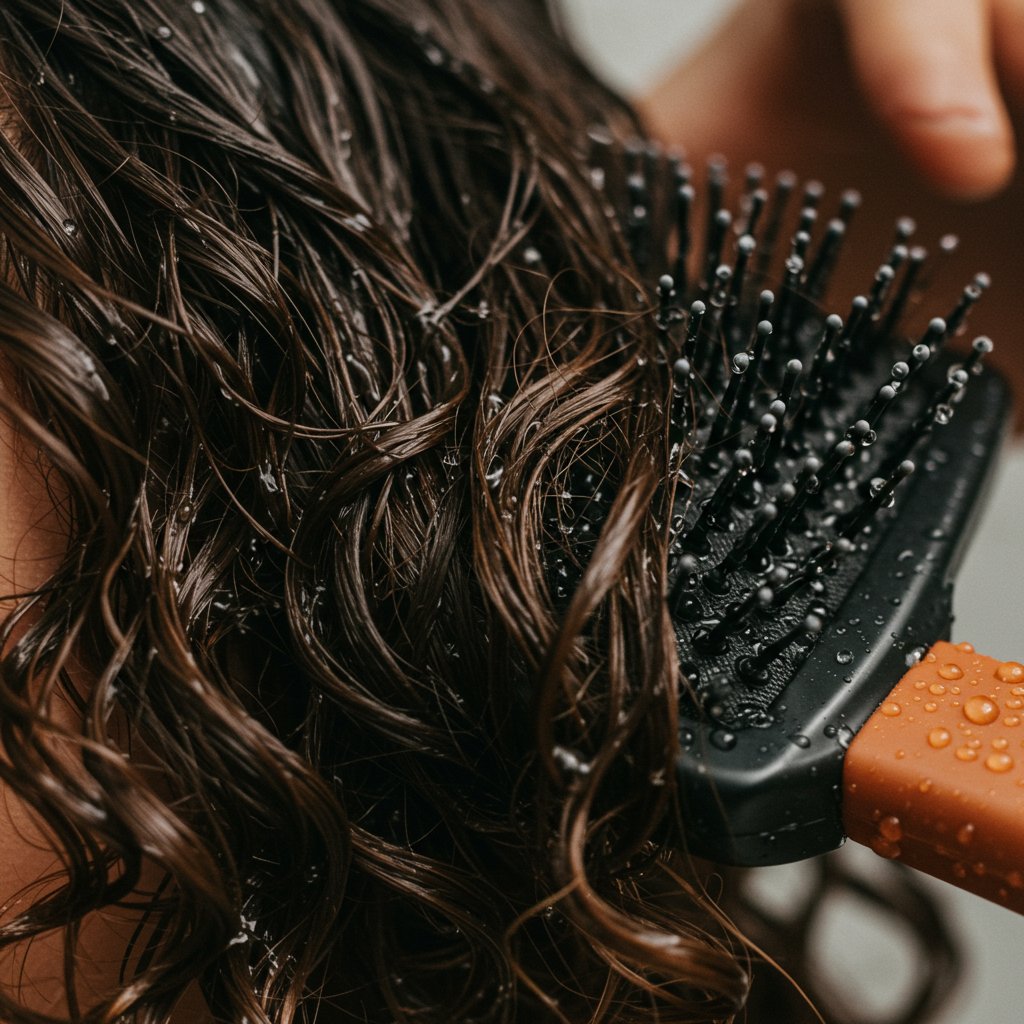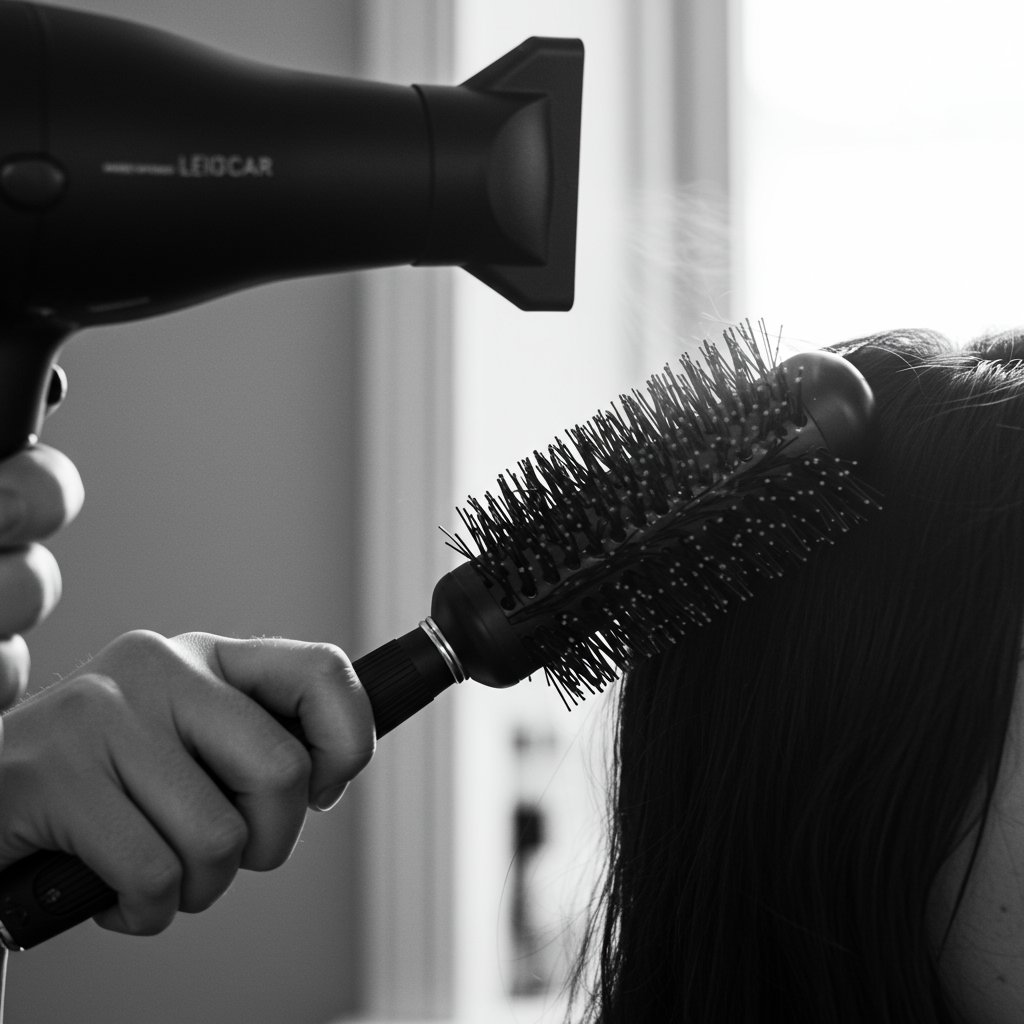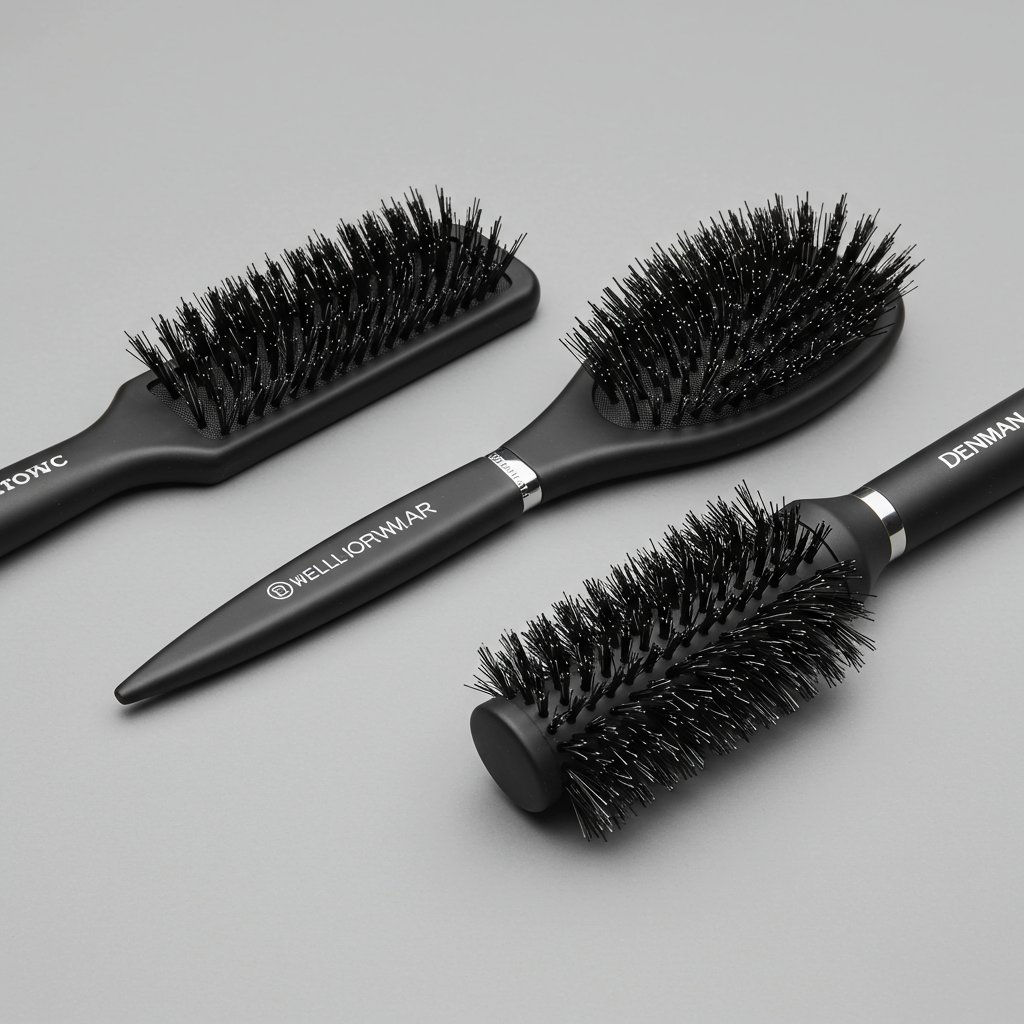Your Essential Guide to the Different Types of Hair Brushes
Have you ever stood in the hair care aisle, overwhelmed by the sheer variety of brushes? You're not alone. With so many shapes, sizes, and bristle types, choosing the right tool can feel like a complex puzzle. Yet, the secret to achieving salon-quality hair at home often lies in this very choice. Using the wrong brush can lead to breakage, frizz, and styling frustration, while the right one can unlock volume, shine, and smoothness you never thought possible. Understanding the different types of hair brushes and their specific styling purposes is the first step toward transforming your hair routine from a daily chore into an art form.
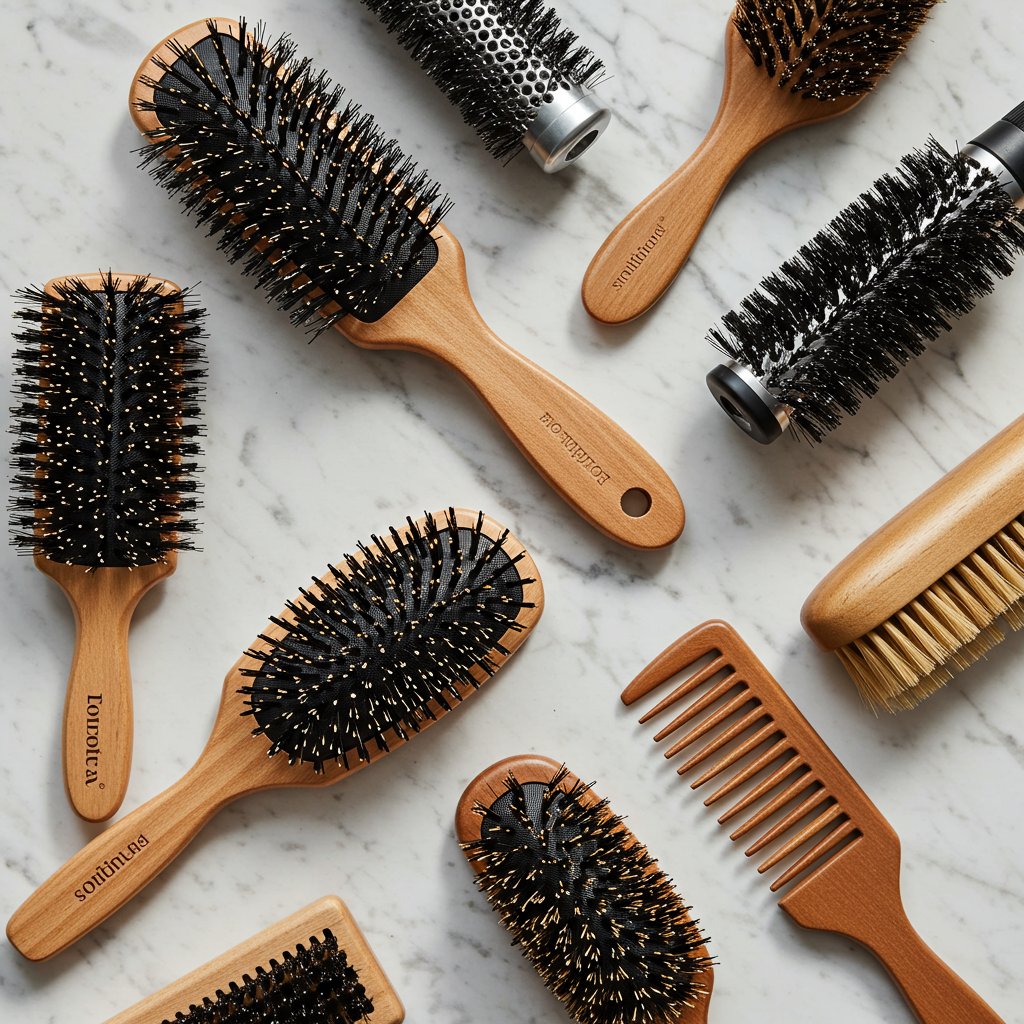
This comprehensive guide will demystify the world of hair brushes. We'll explore each type, from the everyday paddle brush to the specialized teasing comb, explaining its unique design, ideal hair type, and primary function. Whether you're aiming for a sleek, straight finish, a bouncy blowout, or perfectly defined curls, there's a brush designed to help you achieve it. Prepare to elevate your styling game by learning how to select and use the perfect brush to maintain the health and beauty of your hair, ensuring every day is a good hair day.
The Paddle Brush: Your Go-To for Smooth, Straight Styles
A staple in many hair care arsenals, the paddle brush is easily recognizable by its large, flat, and wide rectangular surface. This design allows it to work through large sections of hair at once, making it an incredibly efficient tool for daily grooming. The bristles, typically nylon or a mix, are set in a cushioned base that flexes to prevent pulling and minimize stress on the scalp and hair strands. This gentle action makes it a favorite for those with sensitive scalps or hair prone to breakage.
Who Should Use It?
The paddle brush is a true workhorse, but it shines brightest on those with long, thick, and naturally straight or slightly wavy hair. Its broad surface is perfect for smoothing large sections quickly, taming frizz, and creating a sleek, polished look. While it can be used on most hair types for general detangling, its primary strength isn't in creating volume or curls. If your goal is to maintain a straight style or quickly detangle after washing, the paddle brush is an indispensable tool.
Styling Purpose
Beyond basic detangling, the paddle brush is the ultimate tool for achieving a pin-straight finish. When used with a blow dryer, its flat surface acts like a mini flat iron, pulling the hair taut and smoothing the cuticle as it dries. For a super sleek look, direct the nozzle of your blow dryer downward along the hair shaft as you brush from root to tip. It’s also fantastic for a gentle scalp massage; the cushioned base and flexible bristles stimulate blood flow to the scalp, which can promote healthier hair growth.
The Round Brush: The Secret to Volume and Perfect Blowouts
When you envision a classic, voluminous salon blowout, the round brush is the star of the show. These brushes come in a variety of sizes and materials, each designed for a specific purpose. The barrel of the brush is the key component; it can be made from ceramic, which heats up evenly and retains heat for faster drying, or tourmaline, which emits negative ions to combat frizz and enhance shine. The size of the barrel dictates the final look—a smaller barrel creates tighter curls and waves, while a larger one produces soft bends, straightens hair with a slight curve, and adds significant volume.
Choosing the Right Size and Barrel
Selecting the correct barrel size is crucial. For short hair, a small round brush (1-1.5 inches) is ideal for creating lift at the roots and adding texture. Medium-length hair benefits from a medium-sized brush (1.5-2.5 inches) for creating bouncy waves or a classic blowout. For long hair, a large round brush (3+ inches) is perfect for achieving maximum volume and creating long, loose waves or a sleek, straight look with beveled ends. The bristles also matter; a mix of boar and nylon bristles provides excellent tension and grip, which is essential for smoothing the hair cuticle while styling.
Styling Purpose
The round brush is exclusively a styling tool, designed to be used with a blow dryer. By wrapping sections of hair around the barrel and applying heat, you can create curls, waves, and incredible volume. The tension created by pulling the brush through the hair while drying is what smooths the cuticle, resulting in a shiny, frizz-free finish. For maximum volume, focus on lifting the roots as you dry. For curls, wrap the hair around the barrel and apply heat before setting it with a cool shot from your dryer. Mastering the round brush takes practice, but the bouncy, professional results are well worth the effort.
The Detangling Brush: Gentle Solutions for Knots and Tangles
Anyone who has battled with stubborn knots knows the pain and potential damage that can come from aggressive brushing. The detangling brush was specifically engineered to solve this problem. Its design features incredibly flexible bristles of varying lengths that are strategically spaced apart. This allows the brush to gently separate knots without ripping or pulling through them, significantly reducing breakage and split ends. They are typically made of plastic and can be used on both wet and dry hair, though they are particularly effective on wet hair, which is at its most fragile state.
Best for Which Hair Types?
Detangling brushes are a universal tool, beneficial for literally every hair type and texture. They are an absolute must-have for those with curly, coily, or kinky hair, as they can glide through texture without disrupting the curl pattern. They are also a savior for fine hair, which is prone to breakage, and for thick hair that is susceptible to major tangles. Furthermore, they are the go-to choice for children's hair, turning a potentially tearful experience into a quick and painless one.
How to Use It Effectively
The key to effective detangling is the technique. Always start at the ends of your hair and work your way up to the roots in small sections. This method prevents you from pushing small knots into one large, unmanageable one. Hold the section of hair you are working on firmly to minimize tension on the scalp. For very stubborn tangles, especially on wet hair, apply a leave-in conditioner or detangling spray first to provide slip and make the process even smoother.
The Boar Bristle Brush: For Unmatched Shine and Scalp Health
Considered the gold standard for centuries, the pure boar bristle brush is a luxury tool for hair health. Unlike synthetic bristles, natural boar bristles are structurally similar to human hair, containing keratin. This unique composition allows them to gently grip the hair and redistribute the scalp's natural oils (sebum) from the roots down to the ends. This natural conditioning process is the secret to achieving incredible shine, reducing frizz, and improving overall hair texture over time.
The Magic of Natural Bristles
By coating each strand with a very thin layer of sebum, the boar bristle brush seals the hair cuticle, making it lie flat. This not only creates a smooth, reflective surface for maximum shine but also helps protect the hair from environmental damage. Regular use can improve hair elasticity and reduce the need for styling products, as your hair becomes naturally softer and more manageable. The bristles also provide a gentle scalp massage, which helps to exfoliate dead skin cells and stimulate blood circulation to the follicles.
Who Benefits Most?
Boar bristle brushes are particularly beneficial for those with fine, medium, or straight hair. The gentle nature of the bristles is perfect for delicate strands that are prone to breakage. For those with oily scalps, this brush helps to move the oil away from the roots, which can extend the time between washes. While pure boar bristle brushes can sometimes struggle with very thick or curly hair, combination brushes that mix boar bristles with longer, stiffer nylon pins are an excellent alternative, offering both detangling and conditioning benefits.
The Vented Brush: Speeding Up Your Blow-Dry Time
The vented brush is all about efficiency. Its defining feature is the series of openings, or vents, in its base. These vents are designed to allow air from your blow dryer to pass directly through the brush and the section of hair you are styling. This direct airflow significantly reduces drying time by ensuring that heat is distributed more evenly and moisture can escape more quickly. The bristles are typically firm and widely spaced, making it great for a quick, initial detangle before more precise styling.
How Vents Make a Difference
By cutting down on the time your hair is exposed to heat, a vented brush can help minimize heat damage. It's the perfect tool for a 'rough dry'—the process of getting your hair about 80% dry before switching to a round brush or another styling tool for the finishing touches. This two-step process is a technique used by professional stylists to achieve a flawless look without over-exposing the hair to high temperatures for extended periods.
Ideal Use Cases
This brush is ideal for anyone looking to speed up their morning routine. It's particularly effective on thick or long hair that tends to hold a lot of water and take a long time to dry. While it won't create the polished finish of a round brush, it's excellent for adding initial root lift and volume. Simply lift sections of hair at the crown with the brush and aim your blow dryer at the roots. Its lightweight design also makes it easy to handle and maneuver, reducing arm fatigue during the drying process.
Specialized Brushes: Teasing, Edge, and Denman Brushes
Beyond the daily workhorses, a category of specialized brushes exists to perform very specific styling tasks with precision. These tools are often the secret behind intricate updos, perfectly defined curls, and flawlessly laid edges. While not for everyday grooming, they are essential for anyone looking to master more advanced styling techniques and achieve a truly polished, professional look.
The Teasing Brush
Also known as a backcombing brush, this tool is designed for one primary purpose: creating volume. It's typically long and narrow, with tightly packed bristles (often a mix of boar and nylon) that are perfect for pushing hair down toward the scalp to create a cushioned base of volume. This is the key to building height for styles like ponytails, updos, and bouffants. The pointed tail end can also be used to create clean parts and section hair with precision.
The Edge Brush
A small but mighty tool, the edge brush is designed to style the delicate 'baby hairs' around the hairline. It often features a dual-ended design with a small, firm boar bristle brush on one end and a fine-toothed comb on the other. Used with an edge control gel or pomade, this brush allows you to smooth, shape, and sculpt your edges into sleek, artistic patterns, providing a clean and polished finish to any hairstyle, from a sleek ponytail to braids and locs.
The Denman Brush
An icon in the curly and coily hair community, the Denman brush is a unique styling tool designed for curl definition. Its signature feature is its rows of stiff nylon pins set into a curved, half-rubber base. When used on wet, conditioned hair, the brush glides through, clumping curls together to create defined, frizz-free ringlets and coils. The tension from the smooth, round-ended pins helps to smooth the cuticle of each curl clump. Many models even allow you to remove rows of pins to customize the brush for your specific curl density and desired clump size.
Tips for Choosing and Caring for Your Hair Brushes
Investing in the right hair brushes is only half the battle; knowing how to care for them ensures they perform at their best and last for years. A well-maintained brush is not only more effective but also more hygienic, preventing the transfer of oil, product buildup, and bacteria back onto your clean hair and scalp.
Matching Your Brush to Your Hair Type
To simplify, here's a quick reference:
- Fine/Straight Hair: Boar Bristle Brush for shine and smoothness, Paddle Brush for detangling.
- Thick/Coarse Hair: Paddle Brush for detangling, Vented Brush for quick drying, Nylon Bristle Round Brush for blowouts.
- Curly/Coily Hair: Detangling Brush for wet hair, Denman Brush for styling and definition.
- Wavy Hair: Paddle Brush for a smoother look, Boar Bristle Round Brush for a bouncy blowout.
- All Hair Types: A good Detangling Brush is a universal necessity.
The Importance of a Clean Brush
Your hairbrush traps hair, dust, product residue, and scalp oils. To clean it, first remove all the trapped hair using a comb or the tail end of a teasing brush. Then, create a cleansing solution with warm water and a small amount of gentle shampoo or clarifying shampoo. Submerge the brush (bristles down, avoiding wooden handles) and use a small scrub brush or toothbrush to gently clean between the bristles and on the base. Rinse thoroughly with clean water and lay it bristle-side down on a towel to air dry completely.
When to Replace Your Brush
Even with proper care, brushes don't last forever. Signs it's time for a replacement include missing or bent bristles, cracks in the handle or base, or a cushion that has lost its bounce. Using a worn-out brush can snag and damage your hair, so it's important to replace it once it shows signs of significant wear and tear.
FAQ: Your Hair Brush Questions Answered
1. Can I use just one brush for everything?
While you can get by with one, you won't achieve the best results. A basic setup should include a detangling brush for wet hair and a styling brush (like a paddle or round brush) suited to your hair type and desired look. Using specialized brushes for their intended purpose will protect your hair and elevate your styling.
2. What's the difference between boar bristles and nylon bristles?
Boar bristles are natural, gentle, and excellent at distributing scalp oils for enhanced shine and smoothness, making them ideal for finishing and conditioning. Nylon bristles are synthetic, often stiffer, and better for detangling and providing the tension needed for blow-drying and styling, especially on thick or coarse hair.
3. How often should I clean my hair brushes?
For optimal hygiene and performance, you should remove trapped hair after every use. A deep clean (washing with shampoo and water) should be done every 2-4 weeks, depending on how much styling product you use. A clean brush works more effectively and keeps your hair and scalp healthier.
4. Is it better to brush hair wet or dry?
Hair is most fragile when wet, so aggressive brushing can cause significant breakage. The only brush that should be used on wet hair is a specifically designed detangling brush, used gently from the ends up. For all other brushing and styling, it's best to wait until the hair is at least partially or fully dry.
5. Does the material of a round brush barrel matter?
Yes, absolutely. Ceramic barrels provide even, consistent heat distribution, which is gentle on the hair and helps prevent hot spots. Tourmaline barrels go a step further by emitting negative ions that counteract frizz and seal the cuticle for extra shine. Metal barrels heat up very quickly but can also get too hot, posing a risk of heat damage if not used carefully.
6. What brush is best for hair extensions?
For hair extensions, a loop brush or a brush with very soft, flexible bristles (like a gentle detangling brush or a soft boar bristle brush) is recommended. These brushes are designed to glide over the bonds or wefts without snagging or pulling, which could damage both the extensions and your natural hair.
The Right Tool for a Masterpiece
Just as an artist needs the right brushes to create a masterpiece, a hairstylist—whether professional or at-home—needs the right tools to create beautiful, healthy hair. The different types of hair brushes are not interchangeable gadgets; they are precision instruments designed to perform specific tasks. By understanding their purposes and aligning them with your hair type and styling goals, you move beyond simply managing your hair to truly styling it with intention and care.
Investing in a few high-quality brushes and maintaining them properly is one of the simplest yet most impactful changes you can make to your hair care routine. It protects the integrity of your hair, minimizes damage, and unlocks the full potential of your styles. The next time you reach for a brush, you'll know you have the perfect partner to help you achieve the look you desire. For personalized advice on the best brushes for your unique hair needs, consulting with an experienced stylist can provide invaluable insight and recommendations.



